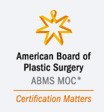Breast Reduction Surgery: The basics
Breast reductions are one of the most common procedures performed by plastic surgeons. The goals of the procedure are to reduce the size of the breasts, create a better shape for the breast which usually includes a lift, create breasts that are more in proportion with the rest of the patient’s body size and shape, and to do so in a safe manner with minimal risk to the patient or to the healing process. The procedure is often covered by insurance but not always, so it’s important to discuss that with your surgeon in advance so there are no surprises.
While there are different ways of performing a reduction, in most cases the incisions involved include an incision around each areola and an incision extending down vertically from the bottom of the areola to the crease; sometimes, we also include an incision within the crease itself, but this depends on the technique used and whether or not the surgeon feels the incision is required to get the best results.
The procedure takes around 2-3 hours, patients go home the same day in most cases, and healing takes several weeks. The final result is usually not know for several months as the breasts need to settle into their final position. The incisions can take several months and even up to a year to finally settle down, and may need touch-ups in the future, including laser treatments, in order to get the absolute best cosmetic result.
The benefits of the procedure include the possibility for relief of upper back and neck pain– it’s important to know that this cannot be guaranteed as some folks have neck and back pain for other reasons, but in many cases the pain is improved. The other benefits include improved shape and symmetry of the breasts including breasts that are lifted into a better position, as well as more comfort and symmetry in clothing.
Just with any surgical procedure, there are risks, which include things such as poor healing with bad scars that take a long time to settle down or may require revisions. After all of the healing has occurred, the final result may be slightly fuller or smaller than anticipated, but the good news is that in nearly all cases, there are simple touch-up procedures with little postop discomfort or downtime that can be done, often at little or no charge to the patient, in order to achieve the best possible final result!
The key ingredient here is communication: it’s critical to discuss any questions or concerns with your surgeon both before your procedure and after, and work together to make sure you get the best possible results. In the end, our goals are the same as your goals: a good result, a safe procedure, and a happy patient!















